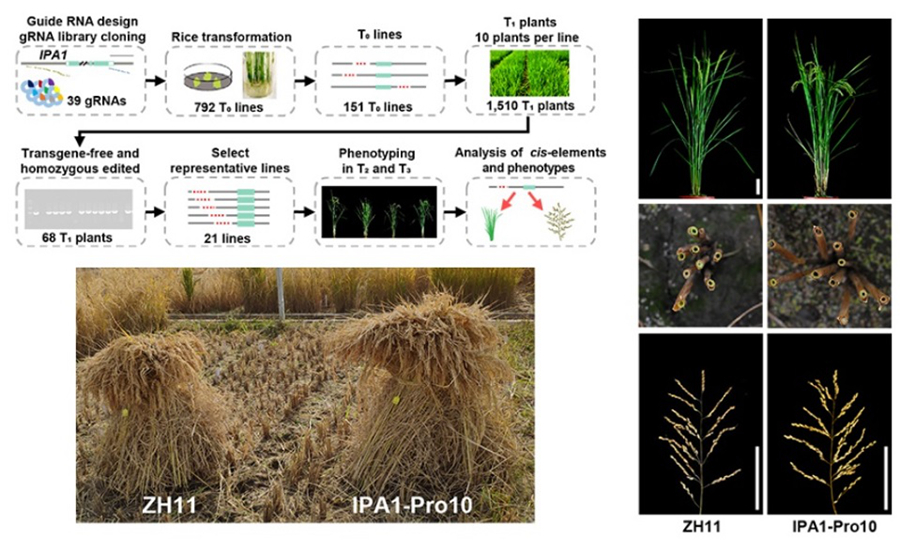Crop breeding is largely constrained by tradeoffs among different agronomic traits. Since many of these tradeoffs are caused by gene pleiotropy, reducing gene pleiotropy may make it easier to overcome these tradeoffs in plant breeding. However, few effective strategies have yet been developed.
In a study recently published in
Nature Biotechnology, researchers from LI Jiayang's group at the Institute of Genetics and Developmental Biology of the Chinese Academy of Sciences used tiling deletion to edit the
cis-regulatory region of the pleiotropic rice gene
Ideal Plant Architecture 1 (
IPA1). In doing so, they overcame the tradeoff in rice yield component traits, providing an effective strategy for overcoming the bottleneck in rice yields.
IPA1, identified by LI's group, is a dominant regulator of plant architecture in rice. It encodes a plant-specific transcription factor, regulates various aspects of rice growth and development, and plays an important role in disease resistance and environmental adaptability.
The gain-of-function alleles of IPA1 lead to few unproductive tillers, more grains per panicle, stronger culms, robust roots and thus a consequent increase in grain yield. As a result, they have been widely used in rice breeding. However, IPA1 is a typical pleiotropic gene that increases grains per panicle but reduces tillers.
To overcome the tradeoff between panicle size and tiller, the researchers modified the cis-regulatory region of IPA1 to regulate its expression level in young panicles, stem bases and other tissues, in order to specifically regulate different traits. However, due to limitations of previous technical methods, the function of crops' cis-regulatory region was largely unknown.
They then performed a tiling deletion-based CRISPR/Cas9 screening for the desired cis-regulatory region of IPA1. From the genome editing library, the researchers identified IPA1-Pro10, a line that harbors a 54-bp cis-regulatory region deletion that can simultaneously increase tiller number and grain number per panicle.
IPA1-Pro10 showed enlarged panicles, increased tillers and plant height, thicker stems and roots, and its yield increased by 15.9% in paddy fields.
Furthermore, the scientists further investigated the IPA1 cis-element’s molecular mechanism for regulating panicle traits, and found that An-1, a key transcription factor for domestication, can bind to the GCGCGTGT motif in the 54-bp cis-regulatory region and specifically regulate the expression of IPA1 in young panicles, which in turn specifically regulates panicle traits.
This study provides a feasible method for overcoming the tradeoffs among agronomic traits. It also provides new genetic resources for overcoming rice yield bottlenecks. For these reasons, this study represents important progress in this field.
In the future, systematic elucidation of the cis-regulatory regions of core genes will provide new molecular mechanisms and genetic resources for overcoming bottlenecks in crop breeding.
The mechanism of boosting rice yield by overcoming a trait trade-off beteen tiller number and panicle size. (Image by IGDB)





